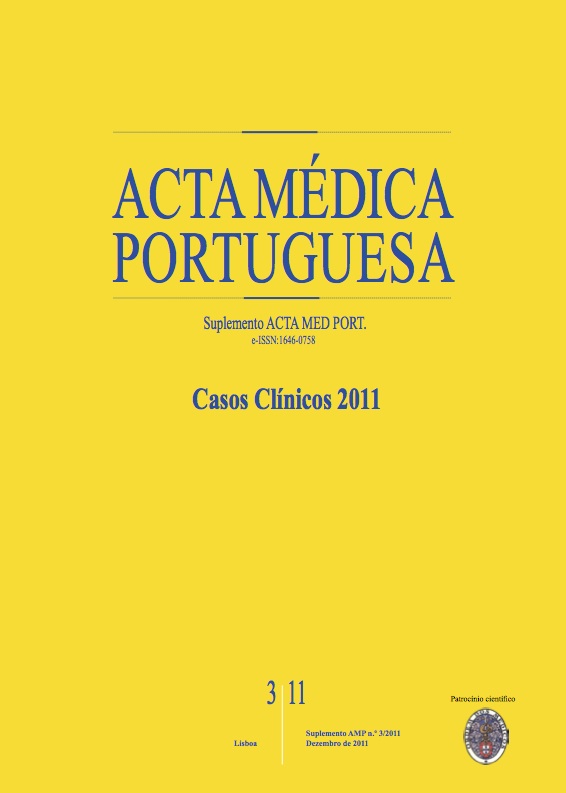Pituitary atypical adenoma or malignant corticotrophinoma?.
DOI:
https://doi.org/10.20344/amp.1544Abstract
Pituitary tumors are classified into typical adenomas, atypical adenomas or carcinomas. Carcinoma represents 0.2% of pituitary tumors and is defined by the presence of metastases. It often presents as invasive and secreting macroadenoma, showing features of malignancy ab initio or over time. The high proliferative index (Ki-67) and immunostaining for p53 protein are common indicators of aggressiveness. We report a 58 years old male with invasive sellar incidentaloma. The hormonal study showed gonadal, thyroid, and somatotrophic failure, with increase of corticotropin (ACTH) and cortisol. Transsphenoidal surgery was performed and histology revealed a typical corticotrophinoma. The successive recurrences over 10 years led to five surgical reoperation and radiotherapy. After the third surgery, cellular atypia, Ki-67 of 27% and immunostaining for p53 were revealed. Subsequently, there were lesions suspicious of metastases (lung and lymph nodes), but the biopsy of the lymph nodes was inconclusive. The patient died before chemotherapy. In this case, the progressive loss of differentiation points to the need for early diagnosis, timely and aggressive treatment.Downloads
Downloads
How to Cite
Issue
Section
License
All the articles published in the AMP are open access and comply with the requirements of funding agencies or academic institutions. The AMP is governed by the terms of the Creative Commons ‘Attribution – Non-Commercial Use - (CC-BY-NC)’ license, regarding the use by third parties.
It is the author’s responsibility to obtain approval for the reproduction of figures, tables, etc. from other publications.
Upon acceptance of an article for publication, the authors will be asked to complete the ICMJE “Copyright Liability and Copyright Sharing Statement “(http://www.actamedicaportuguesa.com/info/AMP-NormasPublicacao.pdf) and the “Declaration of Potential Conflicts of Interest” (http:// www.icmje.org/conflicts-of-interest). An e-mail will be sent to the corresponding author to acknowledge receipt of the manuscript.
After publication, the authors are authorised to make their articles available in repositories of their institutions of origin, as long as they always mention where they were published and according to the Creative Commons license.









